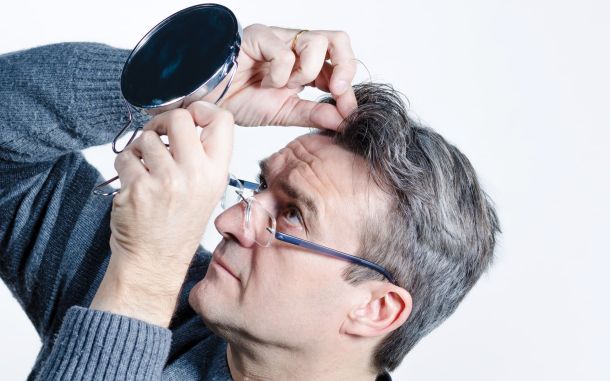How Our Noses Can Sniff out Cancer (and Other Diseases!)

In This Article
-
The scents that emanate from human bodies are as unique as fingerprints in that they are determined by genetics and metabolic differences among human beings.
-
Human breath also contains organic volatile chemical molecules in gas form that can readily blend into air due to having a high vapor pressure at a normal temperature.
-
As the diagnosis of diseases with the help of smell makes progress, the number of cases in which odor patterns in breath or sweat are determined increases.
Every one of our five senses is unique in their own way. The miraculous sense of smell is pointed to in the famous story of Prophet Joseph when his father Prophet Jacob said, “I sense the fragrance of Joseph” from afar, and when he rubbed his shirt to his sightless eyes, he regained his sight (Qur’an 12: 94, 96). This suggests that smell, or sweat, may be a guide for researchers regarding the diagnosis and treatment of diseases.
Some of the novel characteristics of the sense of smell have recently been explored. Studies jointly conducted in three emerging disciplines, namely artificial intelligence (AI), nanotechnology, and molecular chemistry, have suggested that it may be possible to diagnose one's diseases using the smells of his or her sweat, urine, and breath.
Imagine that Parkinson's disease, multiple sclerosis, kidney failure, Crohn's disease, pulmonary hypertension, chronic kidney disease, or any type of cancer could be diagnosed through a simple assessment of the smell of your breath without any painful procedure including having to insert a probe, syringe, or any other apparatus into the body. It would be so convenient, wouldn’t it? We know that breathalyzers are being used for many decades to detect drunk driving by analyzing the sample breath from a driver. Scientists have been curious as to why such an approach could not be utilized to detect other diseases in this manner and have thus engaged in an interesting research.
A team of researchers from universities in Israel, France, Latvia, China, and the United States have recently managed to diagnose 17 diseases with an accuracy rate of 86 percent using an analyzer that determines the molecules in breath samples with the help of AI software.
The scents that emanate from human bodies are as unique as fingerprints in that they are determined by genetics and metabolic differences among human beings. Human babies know their mothers from their scents, and they would not accept being nursed by a woman other than their mother unless they are extremely hungry. Every household has its unique smell. Couples know each other from the scents of their loved ones. The wise purposes for why such an abundance of smells exist in our lives include their whetting our appetite for eating food, feeling spiritual gratifications, and knowing and avoiding spoiled food and other potentially harmful substances. Evidently, when human health deteriorates, foul byproducts – such as the defective molecules that are the result of fermentation, death, decaying, or wrong synthesis due to faults in cells, tissues, or organs – start to move around the body through blood circulation. Some of these consequential defects are removed from the body via perspiration through the skin, urination through the kidneys, or exhalation through the lungs.
Molecular composition of breath
To better grasp this process, we need to have a closer look into the molecular composition of breath. When we exhale, we release nitrogen, oxygen, carbon dioxide, argon, and water vapor. Human breath also contains organic volatile chemical molecules in gas form that can readily blend into air due to having a high vapor pressure at a normal temperature. US biochemist Linus Pauling, one of the founders of modern quantum chemistry and molecular biology who won the Nobel prize in chemistry in 1954 and the Nobel peace prize, examined volatile substances in 250 samples of human breath using gas-liquid chromatography in 1971. Pauling is commonly regarded as a pioneer in the field of modern breath analysis. According to a study conducted 40 years later, exhaled breath contains more than 3,500 chemical compositions mostly consisting of trace amounts of volatile molecules [1].
Most of these compositions are metabolic products synthesized or decomposed based upon the functioning of the organism as a whole and some of them are called biomarkers. For instance, lung biomarkers are related to the processes that occur in the respiratory system, especially in one’s airways. Assessments of these biomarkers is useful in the diagnosis of inflammatory diseases of the respiratory system. Some examples of these biomarkers include hydrogen peroxide and isoprostans, nitric oxide derivatives, metabolites, inflammatory markers such as arachidonic acid (for instance, prostanoids, leukotrienes and epoxides), and adenosines. Breath temperature is also considered to be an important factor in prototypes of an “electronic nose” which takes all of these factors into consideration and in which new analytical and computer technologies integrate them together to produce unique results have started to be manufactured. In regards to diagnosing diseases through odor detection by animals, it is known that dogs are capable of diagnosing Mycobacterium tuberculosis, which causes tuberculosis, by smelling breath while rats can do it by smelling the sputum [2].
In a study, a blood sample taken from a patient with colon cancer was tested against blood samples from healthy subjects and a dog was able to diagnose the sample from the patient with cancer at every run. This study demonstrated that there is such a thing like the scent of a specific cancer and chemical compounds that are unique to cancers may be circulating in our body.
A research team led by professor Hossam Haick from the Israel Institute of Technology collected breath samples from 1,404 healthy people (control) and people suffering from 17 different diseases. These diseases included lung cancer, colorectal cancer, head and neck cancer, ovarian cancer, bladder cancer, prostate cancer, kidney cancer, gastric cancer, Crohn's disease, ulcerative colitis, irritable bowel syndrome, idiopathic Parkinson's disease, atypical Parkinson's disease, multiple sclerosis, pulmonary hypertension, preeclampsia toxemia, and chronic kidney disease.
The wet mucosa layer covering the insides of our nose typically attracts volatile chemical molecules. When odorant molecules come into contact with receptor cells located inside this mucosa epithelium, they become bound to these receptors and send electric signals to some 2,000 glomeruli, which are spherical structures consisting of nerves that can receive smells and encode them as electric signals in the olfactory bulb in the front and base of the brain. There are approximately 2,000 glomeruli around the surface of the center of the sense of smell. Smelling consists of interpretation of the patterns encoded based on the odorant molecules in these glomeruli. The human nose is capable of detecting one trillion smells. In Haick's study, nanotechnology and machine learning replace the biological brain in the process of smelling.
Haick-led scientists used an organic carbon detection layer that controls the electrical resistance of layers made up of nanotubes through which nanotechnological molecules pass through in order to identify volatile organic compounds associated with specific diseases. The electrical resistance varies based on the type of volatile organic chemical molecules. AI software analyzes these changes in a machine learning system to determine which molecule occurs differently in ill people than healthy people in any specific disease. So far, gastric cancer was detected with an accuracy rate of 92-94 percent in the measurements made on more than 8,000 patients in clinics. Thus, researchers were able to discover that every disease has its own unique breath print [3].
As the diagnosis of diseases with the help of smell makes progress, the number of cases in which odor patterns in breath or sweat are determined increases. This raises the hope for detecting many diseases at an early stage even before their symptoms are manifest. An accuracy rate of 90 percent has been achieved in early diagnosis of preeclampsia, a disease associated with high blood pressure during pregnancy [4].
Dr. Hirsch says that the device that can diagnose lung cancer with an accuracy rate of 90 percent is able to detect a special “odor” coming from cancerous cells. The oily sebum secreted from the skin before any symptom of Parkinson's disease has a musk-like scent which is not bad, but different from the normal. When physicians use the same technology to detect Parkinson's disease, other cancers, kidney failure, multiple sclerosis, and Crohn's disease, the accuracy rate is 86 percent. Ammonia in one’s breath is a sign of kidney failure. Researchers from the University of Illinois have developed a single-use device that can detect the breath print of kidney failure at a very early stage. There are even cases where doctors can diagnose certain diseases just utilizing their nose sensitivity without the need for special equipment. For instance, when a person’s liver starts to deteriorate and fails to decompose certain toxins these pollutants will accumulate in one’s urine, sweat, and even breath, and the odor of raw fish will be sensed.
If you have an infection in your gingiva, bacteria will secrete waste products that smells like rotten eggs due to hydrogen sulfide. This odor tells us that the person in question has gingivitis, a dental abscess, or poor oral hygiene. Diabetic patients have a fruit-like breath odor. This may indicate diabetic ketoacidosis as the body uses fats for energy due to a lack of sufficient insulin or lack of proper use of existing insulin. Sour breath is one of the early symptoms of infectious mononucleosis, caused by Epstein-Barr virus. In some rare metabolic diseases such as trimethylaminuria, foods such as fish, liver, eggs, and some vegetables cannot be digested in the intestines, and as they decay, they give off a strong “fishy” odor. In maple-syrup-urine disease, caused by a genetic disorder, infants are unable to decompose certain portions of proteins, and as a result, their urine, earwax, and other body liquids smells like maple syrup.
References
- Popov, A. T. (2011): Human exhaled breath analysis. Annals of Allergy, Asthma & Immunology, Volume 106, Issue 6, p. 457.
- Bijland, L.R., M K Bomers, M.K., Smulders, Y.M. (2013): Smelling the diagnosis: a review on the use of scent in diagnosing disease. Neth. J. Med.Jul-Aug. 71 (6): 300-307.
- Nakhleh, M.K., Haick, H. et al. (2017): Diagnosis and Classification of 17 Diseases from 1404 Subjects via Pattern Analysis of Exhaled Molecules. ACS Nano 2017, 11, 1, 112–125.
- Nakhleh, M.K., Baram, S., Zaher, R.J. et al. (2016): Artificially Intelligent Nanoarray for the Detection of Preeclampsia under Real-World Clinical Conditions. Advanced Materials Technologies 1 (9): 1600132









